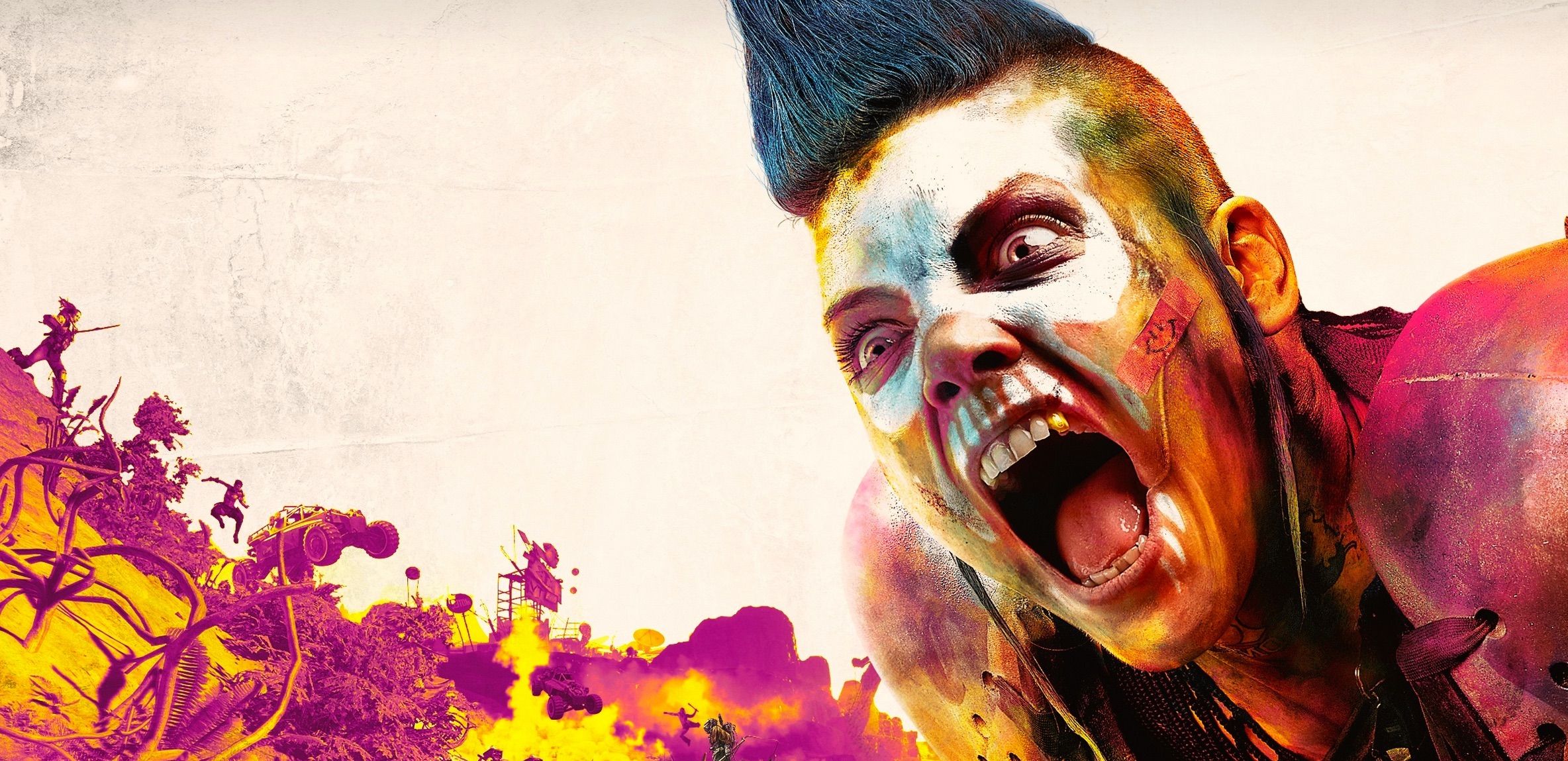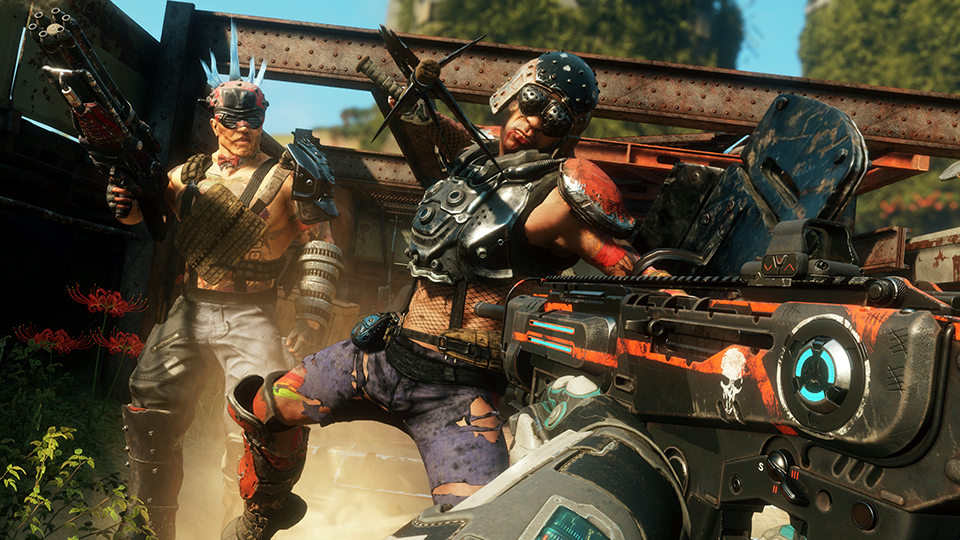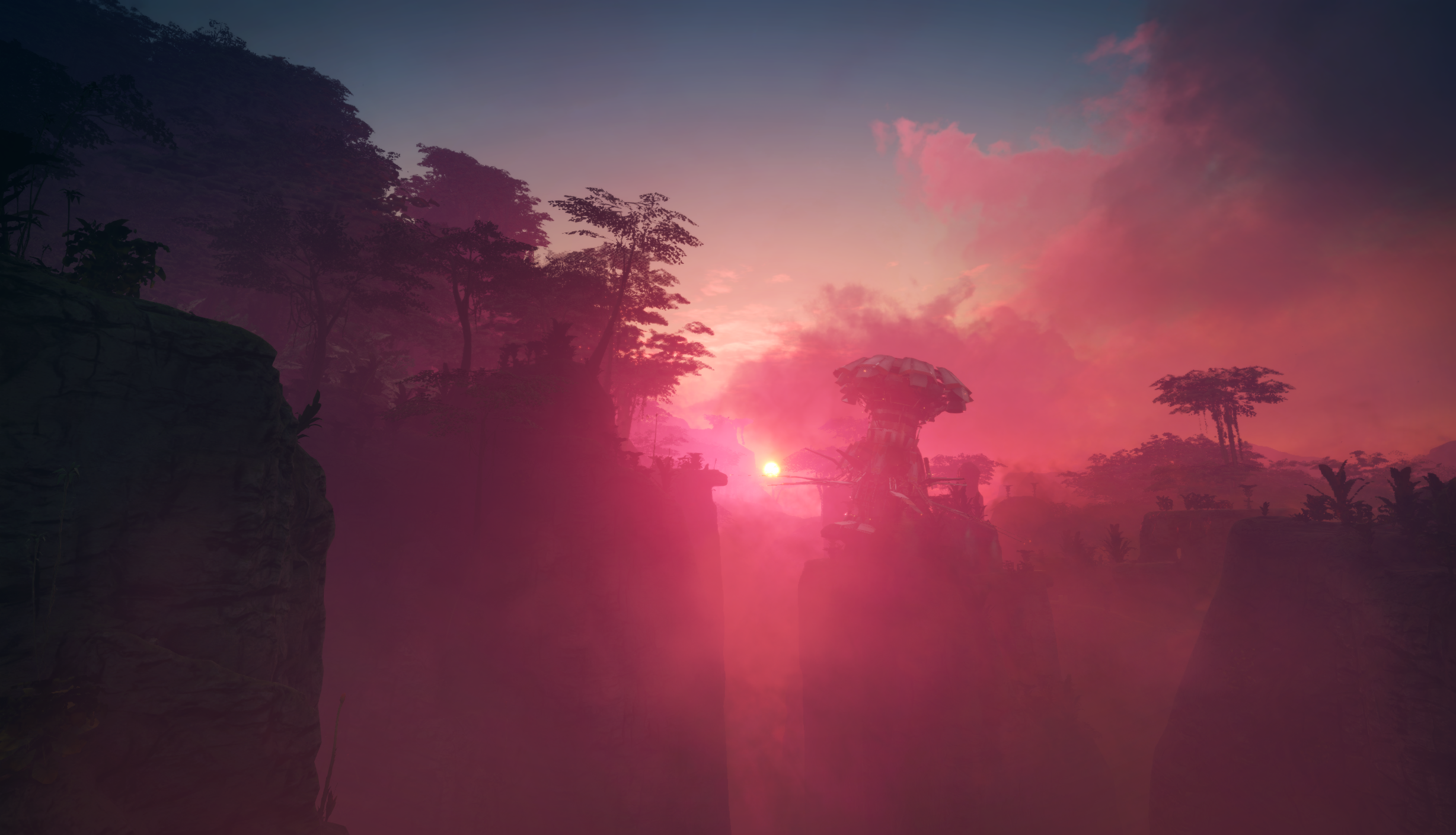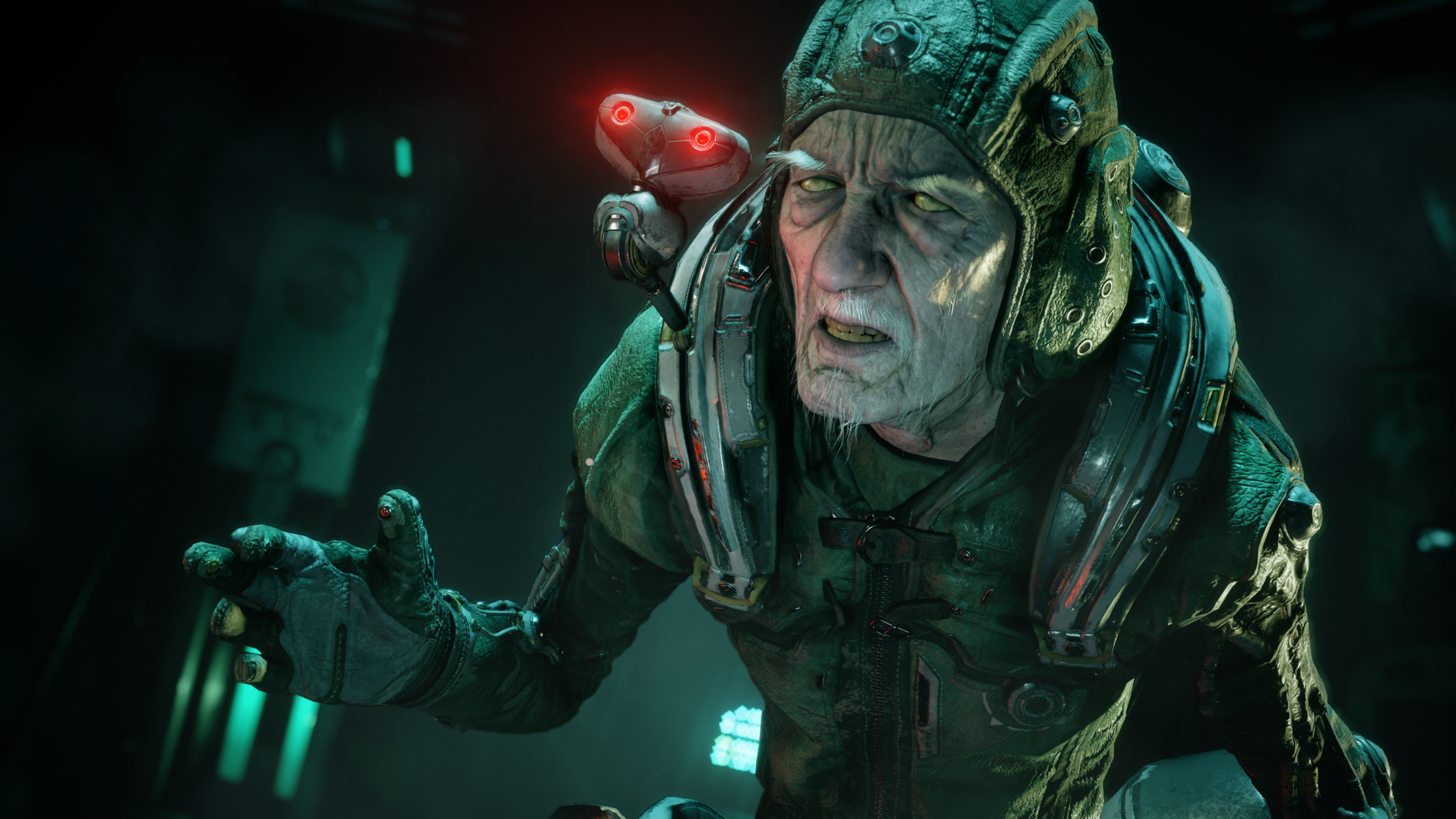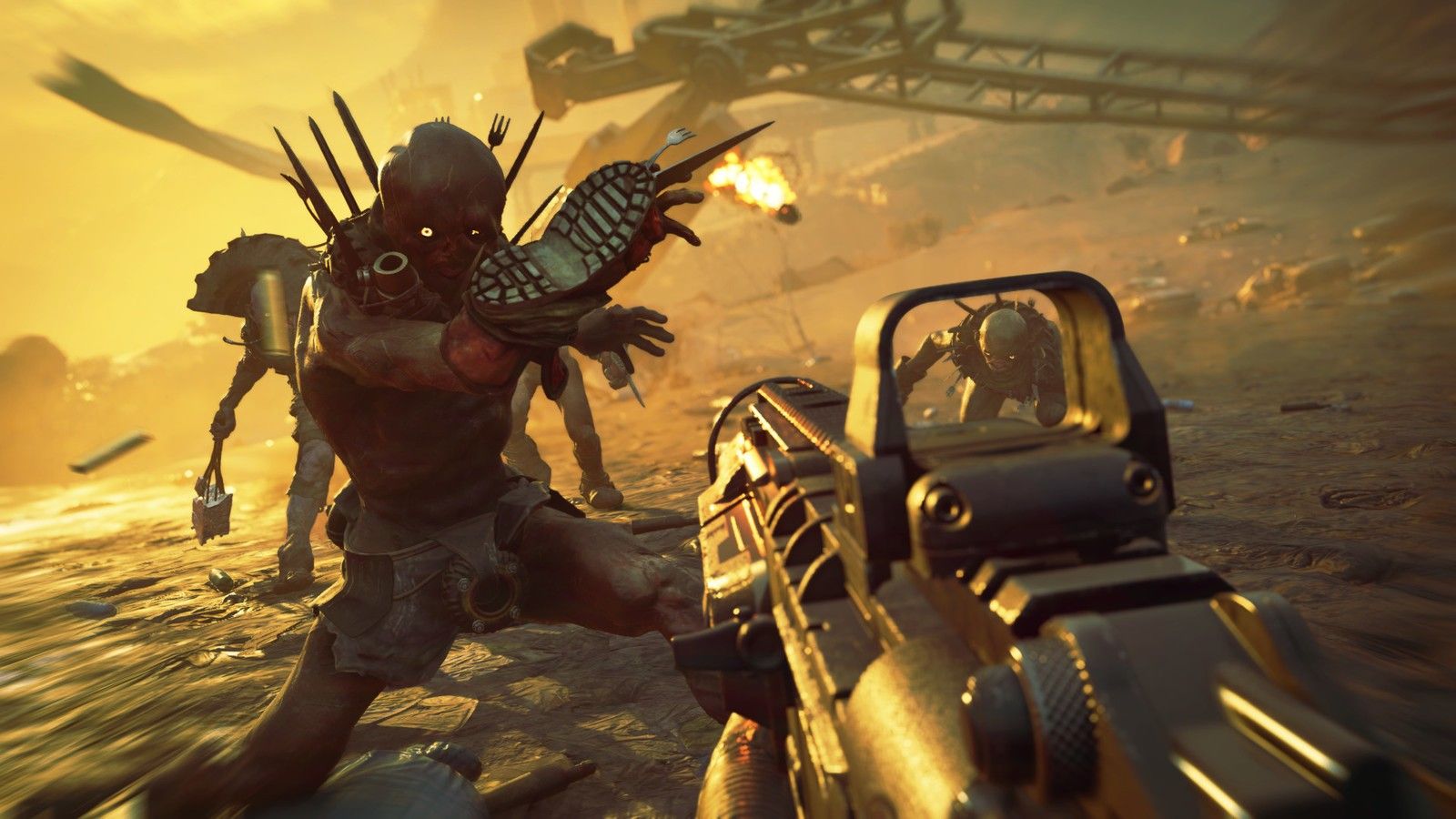Rage 2 is right around the corner. The people at Avalanche Studios and id Software are creating a true open-world sequel to id Software's roughly eight-year-old post-apocalyptic shooter. This time around, they've switched the brown color palette with a more vibrant package, as well as shooting gameplay akin to 2016's Doom. We talked to id Software's Studio Director Tim Willits about Rage 2 and working with Avalanche Studios.
Michael: What is the connection between the original Rage and Rage 2?
Tim Willits: Rage 2 takes place 30 years after the events of Rage. Now, if you had not played the original Rage, don't worry about it. We got you covered with the story. We actually really wanted to separate Rage 2 from Rage, both in the gameplay style and in the story.
You play as someone completely different. You play as Walker. We actually gave you a real name and you talk. You can play as male Walker or female Walker. You live in this settlement called Vineland. Vineland is attacked by the Authority -- most people thought the Authority was gone because of what happened after Rage and the Authority wars -- and your home is attacked. That's kind of the start of the game.
Then, once you move past this intro area where we teach you the mechanics of playing the game, you go into the wasteland and that's where and when the game really starts. You meet up with some characters and y'all work together to eventually take down the Authority.
M: What are some of the lessons you've learned from the original Rage?
TW: The number one lesson we learned is don't try to make it open world game without open world technology. In Rage 2, now that you've had a chance to play today, you saw that it's actually an open world game. We always wanted to do something bigger and broader in the original, but the technology limited us to what we could do. We did a lot of great things in the first game, but now in this game, all those components are integrated seamlessly together. So, that intense first-person combat, you just jump out of your car, you're right there in the settlements or the mutant nest, and you're playing. Then you go into your towns, or you go on to your missions, and all of that is seamless. It really helps give a cohesive feel to the world, and it delivers a unique experience.
[pullquote]"The number one lesson we learned is don't try to make it open world game without open world technology."[/pullquote]
M: Are there any gameplay elements from the first game that come back in the second?
TW: Of course, the wing stick and some of the weapons. But we really pushed everything, especially with the nano-tread abilities. Having the ability to use slam, shatter, vortex, and dash have really amped up the combat experience from the original. It's much faster; it's much more intense; it's in your face. Then we have a very complex upgrade system in Rage 2 where everything is upgradable like your items, weapons, abilities, and your Phoenix. So, we've really taken a big step over the original game.
M: Are there any other previous projects that also influenced the development of this one?
TW: Well, of course, Doom had a huge influence. You see the evolution of id Software combat in things like Doom and Quake Champions. Even Rage had some great first-person combat. The Avalanche team made Mad Max and the Just Cause series, which has a lot of open world craziness to it. We definitely had a lot of influences to pull from.
M: Speaking of Avalanche, how much of Rage 2's development is from id Software compared to Avalanche?
TW: Avalanche is the developer. It's their technology and it's their team. We had id Software work with them on game direction, on making sure the first-person combat good, and we pulled people in and out from the id Software side. But the bulk of it is Avalanche.
M: How has that experience been working with Avalanche?
TW: It's awesome. I mean, I love that team. They share the same design abilities that we do. They share the same passion for great game design as we do. Avalanche make great games, and I've learned so much about open-world gameplay, open-world missions, and having a more robust design and robust story. It has been a huge, huge influence from Avalanche.
M: Something I noticed while I was playing the demo, it feels like the missions are very open-ended. Kind of like a checklist. Is that mission structure just what you're showing off for the demo and are there going to be more story-driven missions in the full game?
TW: Yes. We did not set you up in one of the story missions in it today because you only have twenty minutes and we just want you to have fun, run around and do some cool stuff. So, yes, there are three main characters that you work with: Dr. Kvasir, from the original, Mayor Loosum Hagar, she runs Wellspring, and Captain John Marshall. Those three characters give you your main missions, for lack of a better word, and it's through those people all working together where you eventually take down the Authority.
But, what you played today was just the world, and there are all kinds of activities. Based on what you do in the world, like taking on bandit outposts, mutant nests, or convoys, you help one of those three NPCs, and that helps you progress through your upgrades and your projects. Everything is connected. It's all very complex, but it's a lot of fun.
[pullquote]"Avalanche make great games, and I've learned so much about open-world gameplay, open-world missions, and having a more robust design and robust story."[/pullquote]
M: Talking about the size of the open world, if you could compare it to size for any other game -- maybe in comparison to Avalanche's Just Cause 4 -- is it bigger or smaller?
TW: The physical size is actually smaller, but it's denser. So, we don't have jet planes; you're not flying for a thousand miles, but as you saw when you played, we try to put something fun and engaging around every corner. We felt that was the way that we wanted to design this game. Denser and more compact.
M: Yeah, I noticed when I was pulling the map back, I'm like, "This is way bigger than I thought it was gonna be."
TW: It's big. It's definitely big, but we're really going for density.
M: Something I personally love about id Software games is how technically sound they are. You're always running a solid 60 frames no matter what the game is. What are the benchmarks for each platform? Are you pulling 60 frames for each one?
TW: We're using Apex technology. Which, actually, is not id Software technology but it's very, very, very good technology. So, if you have one of the newer Xbox, like the Xbox One X, and the PlayStation 4 Pro, it runs at 60 [fps]. If you have the vanilla systems, then it'll run at 30 [fps]. Of course, if you have a PC it'll run as fast as you want to make it run. So, if you're thinking about upgrading to the PS4 Pro or Xbox One X, now is the time to do it.
M: Was that a priority in development or was it more the world building and story?
TW: Yeah. I mean, because it's an id Software game, and we believe speed is more important than 4K, we really push hard on that speed.
M: Does resolution take a hit because of that at all?
TW: No. So, we do not run at 4K. It's 1080p at 60 [fps]. We feel that our players want speed over 4K.
[pullquote]"We believe speed is more important than 4K, we really push hard on that speed."[/pullquote]
M: Bethesda has been known to port their games to the Switch now. Could Rage 2 even run on a Switch if a port was being considered?
TW: Well, we’ve been looking into it. It’s just the technology, there are some challenges. But we’re always looking for future platforms and future people to work with. So, we like to investigate, but we have no plans for that right now.
M: As far as the soundtrack goes, do you know who's composing the soundtrack?
TW: This is really cool. So, the soundtrack is actually very dynamic. We actually have a sound AI system where we have all these different tracks or musical bits, for lack of a better word, and then the game system will put them together based on what you're doing. So, if you're in an intense battle, it's all very exciting. Then it'll cool down as you explore the world and different personalities for different places around the wasteland. So, it's very dynamic; it's very rich. We have a few tracks that we like, but it's more of a dynamic emotional system.
M: Where did the bright pink aesthetic come from? What was the influence there to change it to that?
TW: Rage, you know, it's very brown. Mad Max, the game that Avalanche worked on, is very brown. So, both studios were like, "Let's use the other side of the color spectrum." We really wanted to evolve the world, the story, the setting, and the feel. That's why it takes place in the future... I mean, sorry, it takes place 30 years after Rage, and part of the fiction is that these arks fell down from the sky and started to terraform the earth.
So, you have these rich biomes. You have swamps, and forests, and, of course, deserts, and we really wanted to move away from that drab, dark, depressing, sad wasteland. We wanted to have fun; we wanted it to be exciting; we wanted the world to be rich, and we feel that we hit a good tone with it.
[pullquote]"Rage, you know, it's very brown. Mad Max, the game that Avalanche worked on, is very brown. So, both studios were like, 'Let's use the other side of the color spectrum.'"[/pullquote]
M: As far as length for the game, how long do you think somebody could complete it?
TW: It's way longer than I thought. People have been spending hours on it because we have a couple hundred upgrades, we have all these activities and things to do in the wasteland. You're going to spend a long time with it, which is great. Especially since it's a single player game.
M: What does post-launch look like for Rage 2? Are there plans for DLC?
TW: We want to stretch the tail of this product as far as we can. We're going to have some free updates and some paid updates. We want to keep players engaged in the world. We have a few community things that we'll be introducing after we launch, but it'll be a series of free updates and paid updates to keep people engaged.
M: Why go back to the world of Rage?
TW: Because, you know what, millions of people played it and it was a highly rated game that sold well. So, why not? It gives us this environment to really build from, and it's a rich world that had a lot of opportunities to get into it and explore.
M: Lastly, what would you want the audience to know about Rage 2?
TW: It's really fun. It has everything you love about id Software games. It has a very fast, intense, push-forward, combat system. We reward you for getting into the battle. You do need to practice some of your abilities. A lot of people get in and they just play with the machine gun. Once you start to find those arks open them up and get those cool weapons and abilities, the game really starts to shine. I encourage you to watch our streams and our videos that showcase what you can do when you combo your attacks. It just really elevates the game to a whole new level.
You can learn more about Rage 2 from DualShockers' latest preview from PAX East 2019. The game will be launching for PC, PS4, and Xbox One on May 14 and can be pre-ordered on Amazon.

